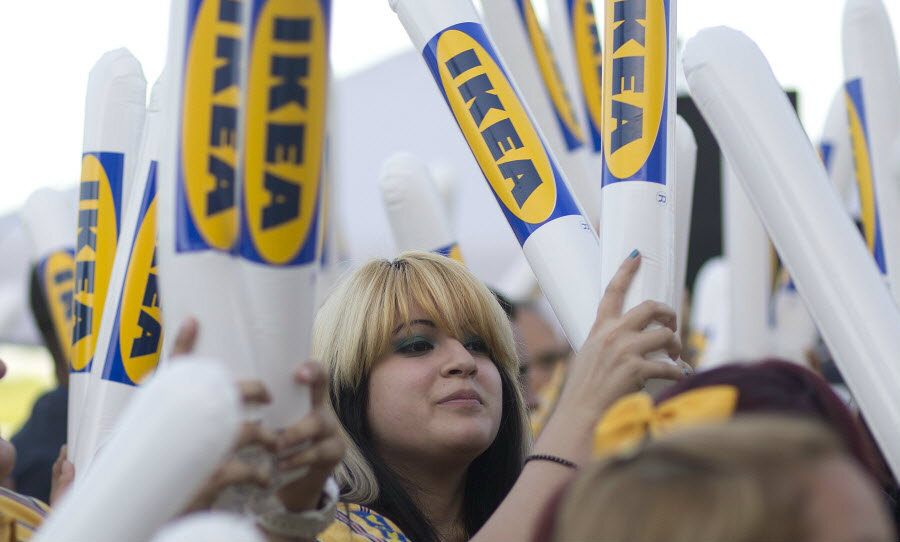IKEA to raise hourly pay again. Does the flexible wage model work?
Loading...
For the second year in a row, IKEA is giving its workers a wage hike.
Starting Jan. 1, the Swedish furniture retailer will up the average minimum hourly pay for its US employees to $11.47, which is a 10 percent increase from the store’s current hourly average and $4.62 above the federal minimum wage, according to reports.
The announcement makes IKEA the latest in a series of major companies to boost hourly pay, in response to a more competitive job market and in the face of a national debate around “living wage.” It also implies the success, at least initially, of the flexible wage model that IKEA introduced last year – a model that takes into account the cost of living in a store’s area.
“We’re very pleased so far,” Rob Olson, chief financial officer for IKEA US, told The Huffington Post.
Amid calls for better pay and working conditions by labor-backed groups across the nation, companies such as Gap, Walmart, and McDonald’s have implemented higher minimum wage standards for their workers, as have cities such as Seattle and Los Angeles. The debate has heated up as critics argue that raising the minimum wage would hurt both businesses and workers, while failing to address unemployment.
“The very last thing that we should be doing as a city is creating a competitive disadvantage for our businesses with those in neighboring cities,” Republican city councilman Mitchell Englander said in May, after the LA city council voted to raise minimum wage to $15 by 2020.
The move, he added, would “make it impossible for entire industries to do business” in Los Angeles.
IKEA’s experience, however, may provide a model for making wage hikes work.
Since January, the company has used a minimum wage system that is based on the Massachusetts Institute of Technology’s Living Wage calculator, which looks at an area’s cost of housing, food, medical care, transportation, and taxes. The idea, Mr. Olson said, is to pay employees the amount they need to afford basic necessities where they live and work.
“We always wanted to make sure we were fair,” he told The Washington Post. “The way we compared fair in the past was being above average. The realization we had was that’s not enough.”
January’s wage hike raised the minimum wage by an average of 17 percent for about half the company’s workers in 38 US store locations.
In May, MIT’s Amy Glasmeier, who developed the calculator, released an update that featured new data and adjustments to the method for measuring living wage in different areas. The changes led to higher amounts across the board – and for IKEA, that means a pay hike for 32 percent of its 10,500 workers come 2016, the Associated Press reported.
The raises have also benefited the company by luring better-qualified applicants, Olson told The Huffington Post. At the same time, the last six months had seen a drop in employee turnover rates, which means IKEA is spending less on recruiting and training, he added.
Of course, the company’s apparent success so far doesn’t mean that raising wages is the solution to all of the nation’s economic woes.
A wage hike may help bridge the disconnect between the national job numbers and Americans’ personal experience and satisfaction, Sherle Schwenninger, director of the economic growth program at the Washington, D.C.-based New America Foundation, told The Christian Science Monitor. But, he noted, real change requires innovation, investment in a range of sectors, and political will and coordination.
Still, there’s something to be said for a company that not only consistently raises the wage floor but also offers a desirable benefits plan for long-term employees.
As The Christian Science Monitor’s Schuyler Velasco put it, “IKEA is still ahead.”






